MPEG-4 Successor H.265/HEVC 2020

A modest metric to assess a video file's compression density is the Quality factor (Qf). In fact, the name is misleading since it is not actually a measure of quality, but an indication of video compression using three parameters: bitrate, the number of pixels in the frame, and the overall frame-rate of the video. Qf is essentially a measure of, "the amount of data allocated to each pixel in the video". This metric doesn't take into account the type of compression profile used, the number of passes originally utilized in the encoding process, or any tweaks implemented by the encoding engineer to optimize the video quality. So Qf, or compression density, is just a baseline guide for an administrator that is responsible for transcoding or managing large video libraries.
- from Visual Unity - Benchmarking the H.265 Video Experience.
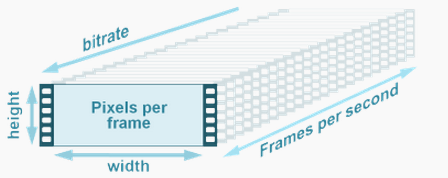
$$Qf = { \text{bitrate} \over {\text{pixels per frame} \times \text{frame rate} } } = { {\text{bits} \over \text{second}} \over { {\text{pixels} \over \text{frame}} \times {\text{frames} \over \text{second}} } } = { {\text{bits}} \over {\text{pixels}} } $$
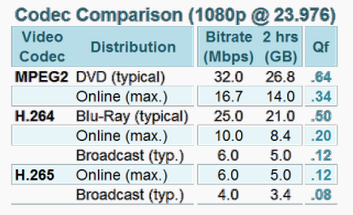
The picture below is a visual representation of Video Compression standards & relative bandwidth requirements.
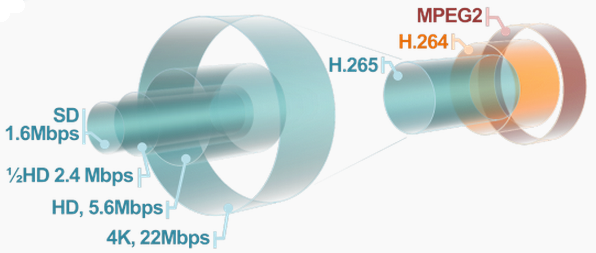
Picture source: Visual Unity - Benchmarking the H.265 Video Experience
On January 25, 2013, the ITU announced that it has completed first stage approval of the H.265 video codec standard. The ITU's Study Group 16, which includes a number of commercial entities such as Broadcom, Ericsson and Qualcomm, has reached first stage agreement on the H.265 video codec standard. The group's work on H.265 will replace the H.264 standard, which is widely used to disseminate video content over the internet.
According to the ITU, H.265 will be twice as efficient in video compression, requiring half the bandwidth for the same quality as H.264 compressed video.
H.265, a.k.a., HEVC(High Efficiency Video Coding) can handle resolutions up to 7680x4320, meaning it can easily handle the 4K UHDTV standards' 3840*2160 and the rather more strenuous requirements of 8K UHDTV. It includes 8-bit, 10-bit and photo-oriented profiles that should cover most 2D capture and playback.
From What You Should Know about The H.265 Video Codec
For H.265 to take off, chipmakers will have to release hardware that supports HEVC decoding. You're able to watch Netflix and YouTube on your smartphone because the graphics chip inside it can decode H.264 video, but those chips won't just magically work with H.265. A few companies like Broadcom have announced hardware chips with HEVC support; Broadcom's processor can handle 4096x2160p video at 60 frames per second, but volume production won't begin until mid-2014. 4K streaming likely won't be the immediate draw of H.265, though--we expect companies like Netflix to eagerly support the codec, since it will allow them to stream 1080p video at half the currently used bitrate.
H.265 adoption will be slow until mass hardware support is behind it, which seems to be at least 18 months away. And, despite how promising the codec seems, there's no guarantee it will completely take over the video world in the same way H.264 has. Google's open, royalty-free VP9 could take a shot at H.265 on the web, and the Blu-ray Disc Association hasn't announced any plans for future codec support.
Captures from Youtube - Qualcomm H.265 vs H.264 video (3840x2160)
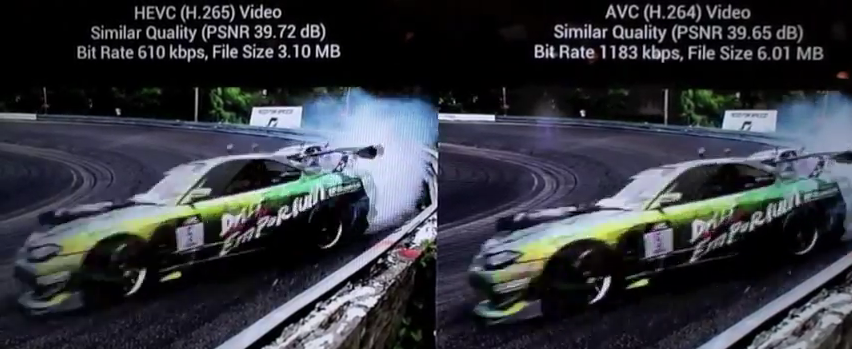
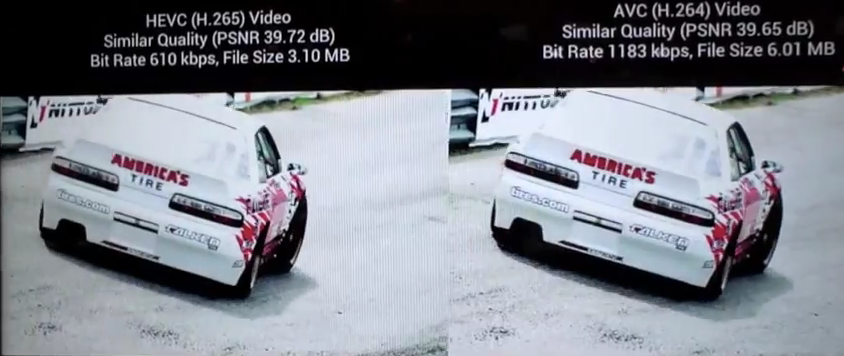
Another one, Qualcomm compares H.265 and H.264 video at 2012 MWC demo on Android
Dr Paul Stallard and Matthew Goldman from the CTO Group at Ericsson's TV Business consider next-generation compression technologies including HEVC and MPEG DASH.
The New H.265 Video Format Will Help Chew Up Video So Your Network Can Swallow It
Streaming video is the future. Well, it's the present, but the future too. And as resolutions increase, it's going to be a tougher and tougher proposition to pipe all that data to your screen of choice in a timely fashion. Fortunately, the new H.265 standard has been approved by the ITU and it's here to help.
Also known as High Efficiency Video Coding (HEVC), the H.265 standard should make HD video streaming easier and could make even UHD (formerly known as 4K) streaming feasible whenever that becomes a thing that people actually might want to do. Ideally, new compression techniques that come along with the H.265 standard should make 1080p streaming possible while only requiring about half as much of the data that's required today.
On top of making it easier to stream increasingly high definition content, the new standard should also make it easier to stream stuff on less-than-zippy networks, bringing higher quality video content to mobile devices with less of a wait on buffering.
But of course, the effects won't be instant. Sure, software encoders are imminent, but we won't really start reaping the benefits until the standard gets adopted down in the chips. H.265 won't be able to shoulder the whole burden of increasingly mammoth streaming video loads, but it should be able to lend a hand, and that's worth something at least.
- from Gizmodo Jan 28, 2013
Intel's over-the-top compression, Feb 20, 2013, GigaOM
...
Depending on when Intel actually rolls out its planned new set-top box, it could be among the first service providers - OTT or otherwise - to deploy the new codec, which could give it some competitive advantages over other fixed-line OTT providers. With a roughly 2X improvement in bandwidth efficiency over H.264, Intel's service will have an easier time slipping under ISP's bandwidth caps than Netflix, Amazon Prime Video, Xbox Live, and other current-generation OTT services. And as Philip Hunter pointed out last week on the Broadcast Engineering blog, H.265 will also allow Intel to deliver higher-quality HD video over limited bandwidth than Netflix or the others currently deliver.
...
NAB2013: H.265 video technology to change content delivery, consumption
From top-left, clockwise: VP9 (experimental), VP8, H.265/HEVC, x264.
Ph.D. / Golden Gate Ave, San Francisco / Seoul National Univ / Carnegie Mellon / UC Berkeley / DevOps / Deep Learning / Visualization